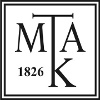Bellardi, Marco (2020) Filmszerű elbeszélés. APERTÚRA, 15 (2). pp. 64-83. ISSN 1787-7245
|
Text
Apertúra 2020 tél Marco Bellardi_ Filmszerű elbeszélés.pdf - Updated Version Download (2MB) | Preview |
|
|
Text
marco-bellardi_filmszeru-elbeszeles_16017.pdf - Published Version Download (311kB) | Preview |
Abstract
A filmszerű narrátor [para-cinematic narrator] fogalmát bevezető cikk a narratív diskurzus szintjén vizsgálja, miként imitálja a filmszerű regény és novella a filmes formát. A szerző az irodalmi igeidők használatát a filmi szemiózis által kifejezett időbeliséggel veti össze. A filmes és irodalmi elbeszélés közötti kapcsolódást a háttér és az előtér narratív stílusai mentén térképezi fel. A szerző amellett érvel, hogy a filmes narratíva előtér és háttér elrendeződése – vagyis a „narratív kiemelés” (Weinrich 1971) – az előtérre teszi a hangsúlyt, s az így kialakuló narratív kiemelést „ellaposítja” a médiumra jellemző „monstratív” minőség (Gaudreault 2009). A lapos narratív kiemelést az erőteljesen filmszerű elbeszélés az igeidők alkalmazásával remedializálja. A montázs és más filmspecifikus technikák imitálása a remedializált, filmszerű időbeliségbe illeszkedő jellegzetességként gondolható el. A szerző felidézi továbbá a műfajelmélet „mód” fogalmát (Fowler 2002), melynek segítségével leírhatóvá válik egy-egy tulajdonság műfajok közötti átültetése. A filmszerű mód fogalmának segítségével az alapvető jellegzetességek filmből irodalomba történő remedializációja műfajspecifikus diszkurzív keretbe foglalható. | This article focuses on the imitation of film form in cinematic novels and short stories on the level of narrative discourse and introduces the concept of ‘para-cinematic narrator’. The author compares the temporality expressed by verbal tenses in literature and the temporality expressed through film semiosis. The connection between film and literary fiction is explored in terms of foreground and background narrative style. It is argued that the articulation of narrative foreground and background – i. e. the “narrative relief” (Weinrich 1971) – in film form tends to favour the foreground style, and that such narrative relief is ‘flattened’ due to the “monstrative” quality (Gaudreault 2009) of the medium. This flattening is remediated in strongly cinematised fiction and conveyed through the use of verbal tenses. The imitation of montage and specific cinematic techniques is conceived, consequently, as a separate feature that can integrate into this remediated, para-cinematic temporality. Finally, the author recalls the concept of “mode” in genre theory (Fowler 2002), which describes a “distillation” of traits from one genre to another. With the category of cinematic mode the remediation of basic traits from film to literary fiction can be framed in terms of genre-related discourses.
| Item Type: | Article |
|---|---|
| Additional Information: | A tanulmányt magyar nyelvre fordította: Karácsonyi Judit |
| Subjects: | P Language and Literature / nyelvészet és irodalom > PN Literature (General) / irodalom általában > PN1993 Motion Pictures / filmművészet |
| SWORD Depositor: | MTMT SWORD |
| Depositing User: | MTMT SWORD |
| Date Deposited: | 22 Jan 2021 15:49 |
| Last Modified: | 12 May 2025 19:39 |
| URI: | https://real.mtak.hu/id/eprint/119895 |
Actions (login required)
 |
Edit Item |



